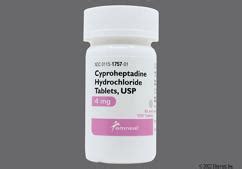The sedimentation rate, commonly referred to as the sed rate, is a blood test that measures how quickly erythrocytes (red blood cells) settle at the bottom of a test tube containing a blood sample. It is a non-specific indicator of inflammation and can be used to monitor the activity of various diseases, particularly those that cause inflammation.
The sed rate test is typically performed by adding an anticoagulant to a blood sample, which prevents the blood from clotting. The blood is then placed in a tall, narrow tube, and the erythrocytes are allowed to settle for a specified period, usually one hour. The rate at which the erythrocytes settle is measured in millimeters per hour (mm/hr). The result is then compared to a standard reference range to determine if it is normal or abnormal.
What does a high sed rate indicate?
A high sed rate can indicate the presence of inflammation in the body, which can be caused by a variety of conditions, including:
- Infections, such as pneumonia or tuberculosis
- Autoimmune disorders, such as rheumatoid arthritis or lupus
- Cancer, particularly lymphoma or multiple myeloma
- Inflammatory bowel disease, such as Crohn’s disease or ulcerative colitis
- Vasculitis, or inflammation of the blood vessels
It is essential to note that a high sed rate is not specific to any particular disease and can be elevated in response to various conditions. Therefore, the test is often used in conjunction with other diagnostic tests to determine the underlying cause of the inflammation.
What does a low sed rate indicate?
A low sed rate typically indicates the absence of significant inflammation in the body. However, it is crucial to interpret the results in the context of the individual’s overall health and medical history. In some cases, a low sed rate may not necessarily rule out the presence of inflammation, as some conditions may not cause a significant elevation in the sed rate.
Factors that can affect sed rate results
Several factors can influence sed rate results, including:
- Age: Sed rate tends to increase with age, so older adults may have a higher sed rate than younger individuals.
- Pregnancy: Sed rate can be elevated during pregnancy due to changes in blood volume and hematocrit.
- Anemia: Sed rate can be affected by anemia, as the reduced red blood cell count can alter the settling rate.
- Medications: Certain medications, such as corticosteroids, can suppress inflammation and lower the sed rate.
Clinical applications of sed rate
The sed rate test has various clinical applications, including:
- Monitoring disease activity: Sed rate can be used to monitor the activity of chronic inflammatory diseases, such as rheumatoid arthritis or lupus.
- Diagnosing infections: Sed rate can help diagnose infections, such as pneumonia or tuberculosis.
- Evaluating cancer: Sed rate can be used to evaluate the presence of cancer, particularly lymphoma or multiple myeloma.
- Assessing inflammation: Sed rate can help assess the level of inflammation in the body, which can be useful in diagnosing and monitoring various conditions.
What is a normal sed rate range?
+A normal sed rate range is typically considered to be 0-22 mm/hr for women and 0-15 mm/hr for men. However, the reference range may vary depending on the laboratory and the individual's age and medical history.
What is the difference between sed rate and C-reactive protein (CRP) test?
+Both sed rate and CRP test are used to measure inflammation in the body. However, CRP is a more specific marker of inflammation and can detect acute inflammation more accurately than sed rate. Sed rate, on the other hand, is a non-specific indicator of inflammation and can be elevated in response to various conditions.
Can sed rate be used to diagnose a specific disease?
+Sed rate is not specific to any particular disease and can be elevated in response to various conditions. Therefore, it is often used in conjunction with other diagnostic tests to determine the underlying cause of the inflammation.
In conclusion, the sed rate test is a valuable tool for monitoring inflammation and disease activity in various conditions. While it is not specific to any particular disease, it can provide useful information when interpreted in the context of the individual’s overall health and medical history. By understanding the factors that can affect sed rate results and its clinical applications, healthcare professionals can use this test to make informed decisions about diagnosis, treatment, and management of various diseases.



